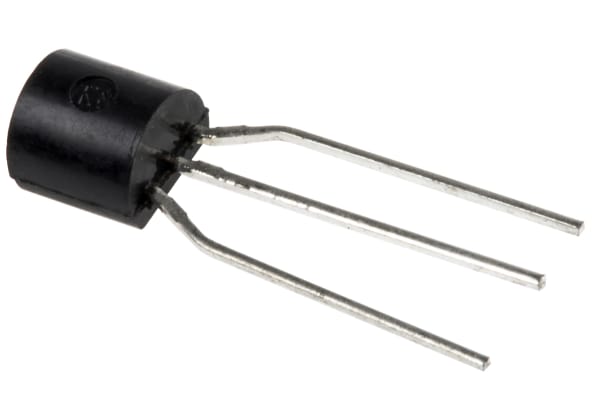- Published 16 Sept 2024
- Last Modified 16 Sept 2024
- 6 min
TTL vs CMOS: What's the Difference?
TTL and CMOS technology are types of digital logic used in electronic circuits for a variety of applications from consumer electronics to industrial control. Learn about choosing the right type of circuit for your application and the differences between TTL and CMOS with our guide.

TTL (Transistor-Transistor Logic) and CMOS (Complementary Metal-Oxide Semiconductor) are types of semiconductor technology. Integrated circuits are etched onto a small piece of semiconductor silicon material. The two technologies are used for a variety of applications based on factors such as voltage levels, power consumption, noise immunity, and speed. For example, CMOS circuits use less power than TTL circuits, while TTL circuits excel at higher speeds.
These two technologies are used in battery-operated devices, computer systems, and high-density integrated circuits, to name but a few. To learn more about the TTL and CMOS logic families, the differences between them, and how to choose the right type of circuit for your application, read on.
What are Logic Gates?
Logic ICs (Integrated Circuits), which implement logical operations in the logic gate of digital circuits, are built from semiconductor devices, transistors, resistors, and diodes. They provide the foundation of most digital technology. The majority of logic gates today are fabricated from MOSFETs (Metal Oxide Semiconductor Field-Effect Transistors), which is a type of complementary metal-oxide semiconductor technology.
What do logic gates do? Simply, logic gates make sensible decisions. Electronic devices process information in binary code (either 0 or 1), and logic gates help them to execute this.
How do logic gates work? There are seven logic gates. They are all based on Boolean algebra. The seven logic gates are, NOT, OR, NOR, AND, NAND, XOR, and XNOR. All logic gates feature one output from two or more inputs. A logic gate accepts inputs of digital information. It then performs a logical operation to output a binary decision – either true (1), or false (0).
Many defined combinations of logic gates are used to make more complex decisions, but there are physical limits to the number of thousands of logic gates taking up the space on a silicon wafer in a chip. The reduction in chip size has enabled significant improvements in the performance, features, and energy efficiency of electronic devices.
What is TTL?
There is a difference between TTL and CMOS logic. What is TTL? Transistor-Transistor Logic is built from bipolar junction transistors. The transistors perform both the digital logic function and the signal amplifying function; therefore, the integrated circuit is named as Transistor-Transistor Logic (TTL).
Bipolar junction transistors feature three terminals, a base, an emitter, and a collector. TTL circuits feature bipolar transistors that are NPN (negative-positive-negative) or PNP (positive-negative-positive). The input voltage switching on the base dictates whether the circuit is on (conducting) or off (non-conducting), between the collector and emitter, resulting in logical ‘1’ or ‘0’ outputs. Also, a small current flow signal at the base and emitter terminals can control a much larger signal between the collector and emitter.
TTL technology was widely used in earlier computer designs, but it has been superseded by CMOS technology for constructing Integrated Circuit (IC) chips.
What is CMOS?
So, what is CMOS? CMOS (Complementary Metal-Oxide Semiconductor) is a very popular technology for chip design. Nowadays, it’s the dominant semiconductor technology used in microprocessors, RAM, SRAM, ROM, EEPROM memory andinverter ICs. CMOS fabrication employs a pair of P-type and N-type Metal Oxide Semiconductor Field-Effect Transistors (MOSFETs). When the N-type MOSFET is on (or active), the P-type MOSFET is off (inactive). Conversely, when the P-type MOSFET is on, the N-type MOSFET is off. Because at a given time, only one type of MOSFET is conducting, power consumption is reduced.
CMOS digital logic circuits combine relatively high speed with low power dissipation and high noise immunity. They work using a wide range of power supply voltages. CMOS technology has developed smaller and smaller transistors over the years, allowing billions of transistors to be crammed on a single chip.
Today, designers value CMOS integrated circuits for electronic gadgets because of their power efficiency, capability to extend battery life, and low heat dissipation.
Differences Between TTL and CMOS
When it comes to CMOS vs TTL, designers must take into account the needs of the specific application:
Performance
CMOS enjoys a range of performance benefits. These include lower power consumption, high noise immunity, and greater fan-out (the total amount of digital inputs the output of one logic gate can supply) compared to TTL.
One key difference between TTL and CMOS is that TTL has faster switching speeds. Engineers who need high-speed frequent switching in their design may thus opt for TTL logic gates. Other drawbacks of CMOS designs that may mean TTL is preferred include higher input capacitance, and susceptibility to electrostatic discharge (ESD), which makes CMOS chips delicate to handle.
On the minus side, TTL circuits feature higher power consumption, lower noise immunity, and lower fan-out than CMOS designs.
Costs
TTL vs CMOS costs vary. Generally, the performance benefits of CMOS come at a price, with CMOS components typically dearer than TTL components. For simpler applications, or in scenarios where budget is a problem, TTL circuits may be specified as a result.
Applications
Key applications of CMOS circuits include:
- Amplifiers
- Microprocessors
- Image sensors
- Analogue to digital converters
- Communications transceivers
- Static random-access memory (SRAM)
Key applications of TTL circuits include:
- Industrial controls
- Digital watches and calculators
- Instrumentation
- Sensor ICs
- Actuators
- Synthesisers

Choosing the Right Logic for Your Circuit
When choosing CMOS vs TTL technology, think about voltage level, noise margin, speed requirements, and cost. TTL circuits operate at a standard of five volts. They are not designed to operate at different voltages, so the engineer needs to bear this in mind along with the higher power consumption of TTL-based devices.
CMOS designs may find favour not only because of reduced power consumption, but also because of their high immunity to noise. For example, in certain industrial control applications where there is a lot of electrical interference, TTL performance could be negatively affected.
So, the needs of the application will determine whether CMOS or TTL technology should be the logic gate selection for your circuit. If you’re looking for high performance combined with low power consumption and ability to withstand interference, CMOS may be the design for you. By contrast, TTL has benefits for simple high-speed applications that require quick and reliable calculations, such as industrial control systems.
Ultimately, the choice of one technology over the other will depend on these types of considerations.
Need CMOS or TTL technology for your design? Explore RS’ range of semiconductors.



